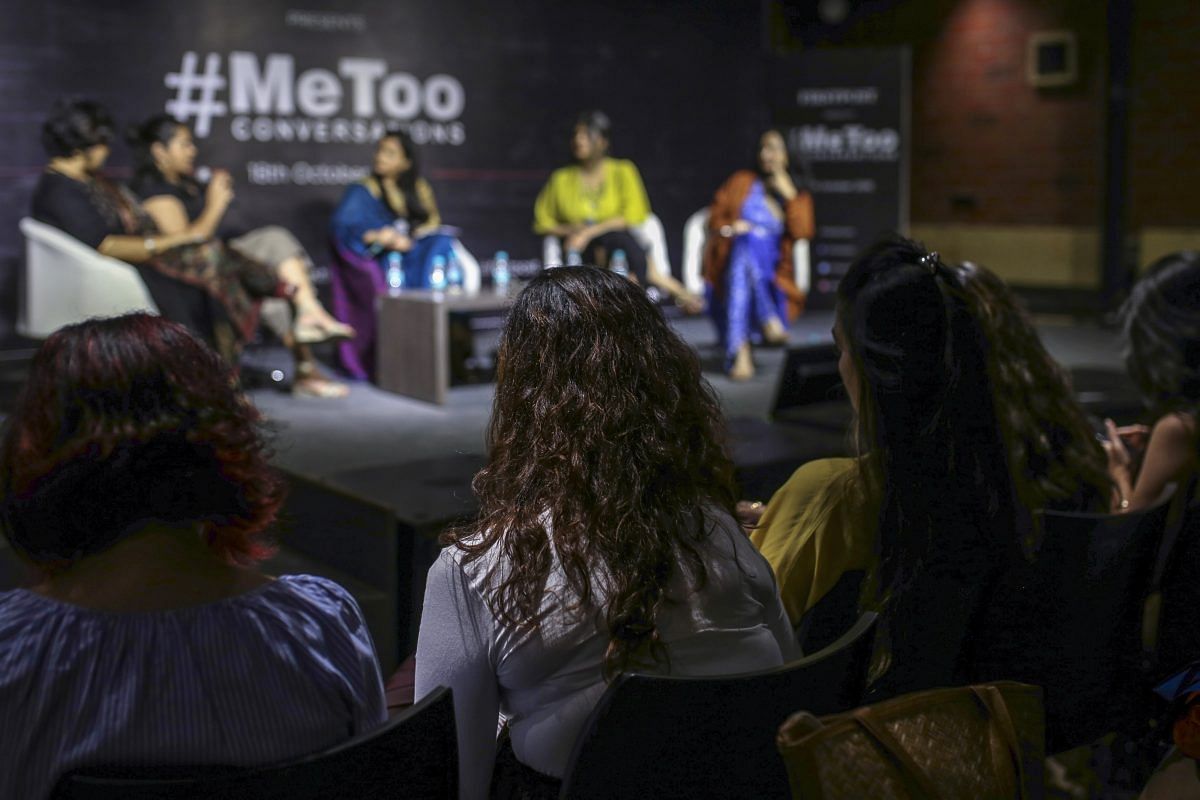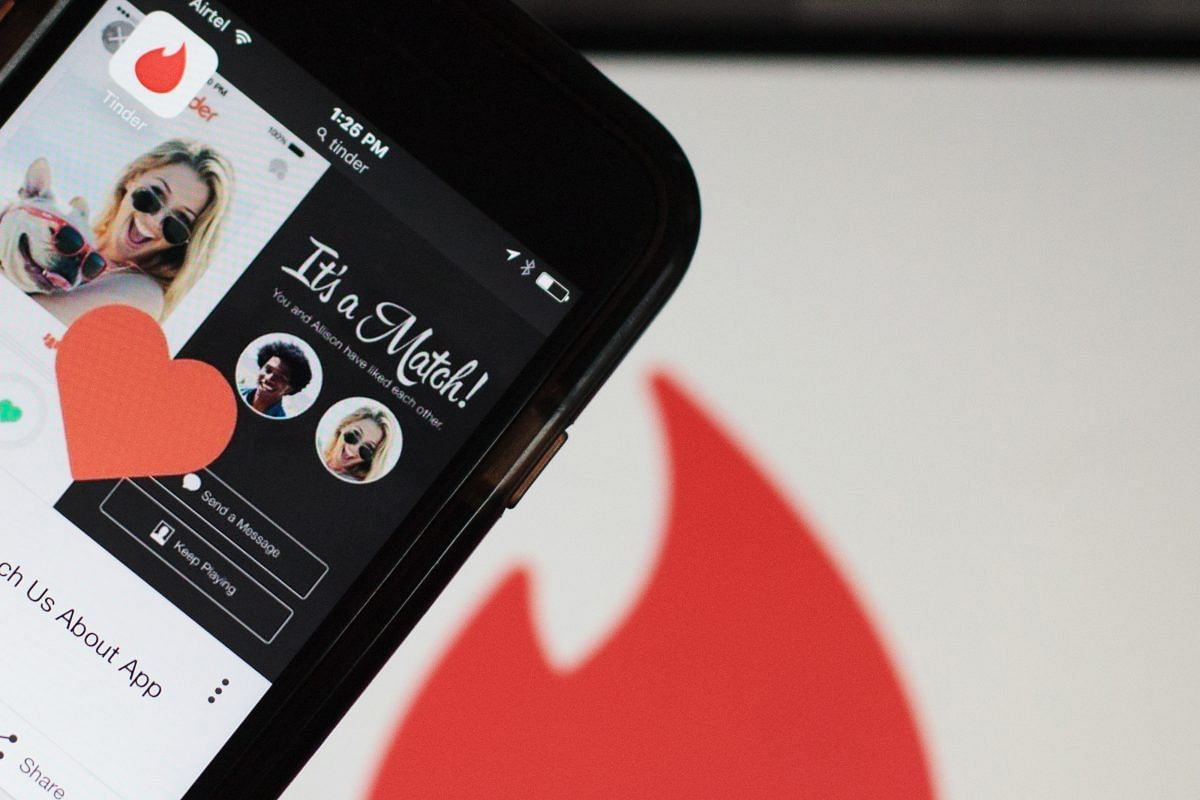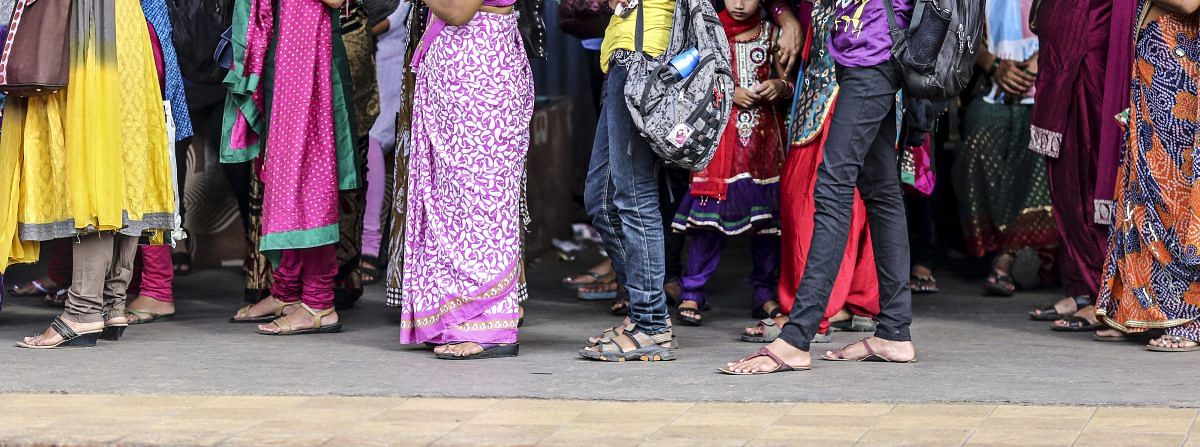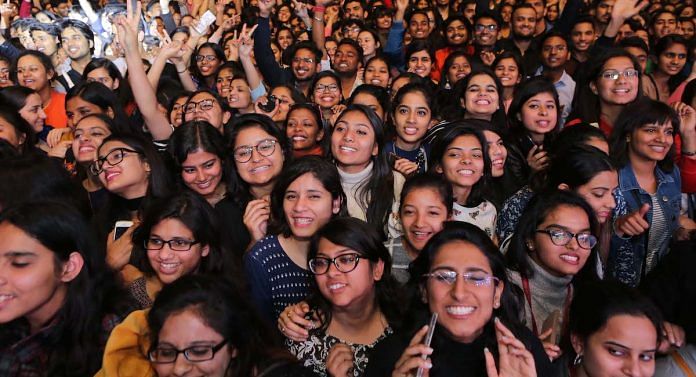Decoding love and consent in the age of #MeToo and Tinder.
Something is on fire this season, and it’s not just the wheat fields in Punjab.
With the viral #MeToo screenshots, there is a growing realisation that the old, lazy, unthinking Indian ways of negotiating or bumbling through courtship, intimacy, romance, hook-ups are getting hollowed out.
The first, obvious impact of the #MeToo debate around consent and sexual harassment is gender behaviour and boundaries at workplace. But it is also creating anxieties among young adults on App-arranged dates.
Much of this shift in how people fall in love – and the tensions around it – is happening in secret, away from the prying eyes and ears of parents and families. There is no doubt that change is coming. But when the online world meets the real world, the consequences remind us that we are in a culture that largely regards the independent woman as a dangerous one. Women who dump the guy they met online get stalked and harassed, police often refuse to file cases against these men and abusive husbands, workplaces and colleges ignore harassment, and streets still feel largely unsafe, even in our biggest cities.
If this moment of change is indeed a revolution, it’s just the rustling beginnings of one.

Tunnel beneath the gates
Remember the 1990s? The years spent watching K-serials and wedding movies made by family-name directors like Karan Johar and Aditya Chopra, where every film was a love triangle, a tug of war between the boy, the girl and family duty, with lines said to women that were often like: “Sapne dekho, bas unke poore hone ki sharth mat rakho” (dream your dreams, but don’t bet on them being fulfilled). Indian women were offered limited agency, and there were movies like Dushman to drive this lesson home – where twin daughter characters presented viewers with good girl/bad girl narratives. In these well-worn plots, the obedient one flourished and the rebellious version suffered terribly or died a grisly death.
The ubiquity of such moral-dispensing, authority-reinforcing, fear-mongering television has been replaced now with the connected smartphone. Since the 2000s, generations have been defined by the internet and apps that dominate our social lives: The Orkut generation, The Facebook generation, and now Instagram/Tinder.
Also read: Barkha Dutt’s open letter to #MeToo critics Tavleen Singh, Seema Mustafa & Manjeet Kripalani
In this online age, there are no intermediaries for content. The internet has built the tunnel beneath the gates. The whole infrastructure of moralistic middlemen is threatened by platforms where user content dominates, where opinions cannot be censored, and where fusty traditionalists must compete with content creators everywhere, including what’s on Netflix and Hotstar. It’s Sacred Games versus Game of Thrones versus Lilly Singh on Youtube.
Draupadi-like 1:5 ratio
Freed from these bloodshot invectives running through our heads, there has been one particular app space that has drawn in Indian women from the educated middle class with some speed. Dating apps are rapidly transforming gender dynamics, relationships, and the freedoms women get to have. What has set newer apps like Tinder – where two of the seven co-founders were women – and Bumble apart are the features built to empower women users. The big challenge for companies in the dating space has been managing the sex ratio on the platforms. This ratio quickly starts getting close to a Draupadi-like 1:5 in female to male users, especially in India where internet users are still primarily male. Typically, men swamp these spaces and overwhelm female users.
What has set newer apps like Tinder and Bumble apart are the features built to empower women users.
Female friends on the dating site OKCupid in Mumbai and Bengaluru told me that they got anywhere from 40 to 100 messages a day, a good percentage of which were either one word (‘hiiii’) or skeevy and unprintable. This usually drives women away from these platforms (male users, on the other hand, said they were lucky to get one non-spam message a week).
Which is why Tinder offered a feature that didn’t overwhelm its female users since users get notified only when the right-swipes between two users – the Tinder equivalent of ‘maybe’ – match. This introduced women in India to a safe space, where they don’t have to field the online equivalent of street stares and catcalls, getting pingbacks only from those they are interested in.
This kind of space is hard for Indian women to find even in real life. I am writing this while in a hotel in Fort Mumbai, a few minutes from the financial district. I have to still think for a bit before I wear a skirt and heels to my meeting because the narrow street outside has plenty of male hangers-on who congregate next to the Saraswati Hotel. It’s a dilemma every Indian woman knows.
Also read: Why Indian feminists are saying yes to #MeToo & no to sex offenders list
No need for middlemen
But these apps introduced a controversial idea: that men can be ignored, without consequences. That women could decide on their own who they went out with. They didn’t need middlemen. They get to refuse, they get to choose. They get to go on good dates and bad, to find someone so promising that honeymoons get secretly planned after five dates before it all falls apart, to be heartbroken, to mend and move on, to be resolutely single for a good long while, to find love somewhere unexpected or with someone unexpected, in race, religion or gender. They get to forget the good girl/bad girl script.
The more trusted apps offer users a mix of the old and the new – such as linking their logins to social media profiles, so you see how many mutual friends potential matches have. You can then if you like do some discreet background checks. One Indian dating app even takes on the role of the Very Intrusive Aunt, calling up users to verify the stated age for instance, and checking in on those listed as ‘divorced’ to confirm that this is indeed the case, asking for relevant paperwork and enquiring who that pretty lady posing with the guy in the Facebook photo is.

The no-strings attached chats that happen within the app allow women to quickly filter out men they find misogynistic or generally unappealing, making misogyny very market-unfriendly, the fastest way to weed it out. Hence the emerging dating sub-segments of woke bros and fake-woke bros, the latter are chameleons masquerading as the real thing, men who might engage a woman on Simone de Beauvoir without believing a word of it.
But what happens when online flirting transitions to real-life dating? Dating in the online app age comes with acknowledging that there are many choices you gave up to be with someone. In that sense, ‘infinite feed’ dating apps cast a long shadow. Their existence enables people to negotiate the relationship on an ongoing basis: knowing that if this one doesn’t work, it is possible to move on, from unhappy, demeaning, or just plain unsafe relationships. And with the sex ratio online being what it is, women have a lot more choices when they leave.
For Indian men and women, this is a new and exciting development since we are not yet fully past being advertised about and married off by the family into the one and only relationship we will ever have unto death.
Houdini-like balancing act
There are mixed results for women, however, when it comes to agency outside the relationship. Having the ‘dating’ conversation with parents is still one that leaves women with a stone in their throats. Parental panic about an unmarried woman having lost her virginity is still a very real thing, so they often know their sons are dating, while having no idea about their daughters’ personal life because she keeps it secret. ‘I cannot tell my parents that my boyfriend lives with me,’ is a common refrain among young women. Entire plotlines of some Indian comedies hinge on this unfortunate fact, where boyfriends are hustled into cupboards or bathrooms when parents appear. A co-worker in a previous company met and then married her boyfriend in a court ceremony, but they kept living in their respective apartments for the next year despite the crazy Mumbai rents, in case her parents ‘just dropped in’.
Also read: What Tinder is doing to India’s mating habits
Yet young women persist balancing, Houdini-like, their different lives, being both the committed girlfriend and the dutiful daughter, renaming Saurabh as Surabhi in their phone contacts, keeping Tinder in folders marked ‘College Essays’ and so on. Because what is now on offer is far better than anything else.
Not in charge of sexuality
It’s the traditionalists’ own fault that the app-approach to romance has been so successful that women are using internet access to free themselves. They had plenty of time to come around to the idea of women’s needs and desires. But they never acknowledged them.
Pretty much every Indian woman knows what it feels like to not be in charge of our own sexuality. It’s humiliating and degrading. When I was in engineering college, girls including me were brutally harassed while walking to college every day. Male students, in groups that often included our classmates, would walk behind us, commenting on our body parts and our relative attractiveness, often assigning us scores. They were more in charge of our sexuality than us, because if we ever dressed up beyond the norm, for instance wearing a tighter T-shirt than usual, we were mocked at, had unspeakable graffiti scratched about us on desks, and were called sluts.
Pretty much every Indian woman knows what it feels like to not be in charge of our own sexuality.
During this time, the curfew for the women’s hostel was 7 pm, while the men were allowed to stay out as long as they liked – again, the responsibility for the lack of safety and persistent abuse was pinned on the women. Even with the curfew, we weren’t spared. A male professor in a class decided to spend half an hour one day fuming about girls being allowed to wear shorts inside the ladies’ hostel.
Women have been told so long that there is only one path for them – obedience. The anger against this has always been a river underneath the road, rage beneath seeming calmness. My grandmother even today tells stories of how her husband would throw the plate of food at her if he was unhappy with the meal she had cooked that day.
Change has to happen offline
The #MeToo movement that has dominated the headlines is an outpouring of all the anger women thought they were supposed to keep in check, and its seeds lie in that historical lack of agency. It’s not that the women who came before us didn’t want what we are fighting for now. It’s just that we have tools, including the sheer viral power of a hashtag, which help spread the anger, turn lit matches into forest fires. Other women are present in large numbers to amplify voices of those speaking up, because we all know exactly what she is talking about: we’ve been through the same thing.

For India, the internet has been a disruptor in an Indian culture habituated against individual agency and tilted towards families that are still de-facto deciders of children’s careers and guardians of their daughters’ virtue. It has allowed ideas and cultural shifts to reach us at light-speed, as fast as the data hits our phones.
Americans reached this point over many years ago – where people meet, go for a casual date, and potentially hook up over the next few meetings without the involvement of parents. The transition from the conservative 1940s and 1950s, from I Love Lucy to Madonna and the working woman Murphy Brown in the 1990s and Sex and the City in the 2000s, was a trajectory spanning several decades.
In India, the transition from highly traditional ideas of relationships has been faster and more fractured, which should make us careful before describing this as any kind of revolution. The wedge the internet has driven in is decidedly still a thin one.
Also read: Swipe right for Pakistan: How Indian millennials use Tinder & Grindr to make love not war
Some of us, the younger, English-speaking generation, are experiencing new freedoms including the libidinal rush of casual dating via apps from a different culture, while many others, the vast majority, are restricted to the same strictures of the past, summarised by what one salesman in a small-town mobile store in Gujarat told me: ‘Men buy themselves smartphones, and they buy their wives and daughters keypad phones’. We have seen, in the backlash against #MeToo allegations, accused men using India’s IPC Sections 499 and 500 –defamation laws regularly deployed against journalists and civil activists – to silence their accusers, and tie them up in legal proceedings.
The new freedoms young Indian women are experiencing today feel like a bridge to something broader and bigger in the future – one not necessarily guaranteed and which will require more battles, shaped by the number of women going to college, getting jobs, and fighting in courts to untie themselves from the rules that have pinned them down for generations. Even with the internet, much of the change will have to happen offline.
The author wrote the best-selling novel Empire and works in the tech industry.



